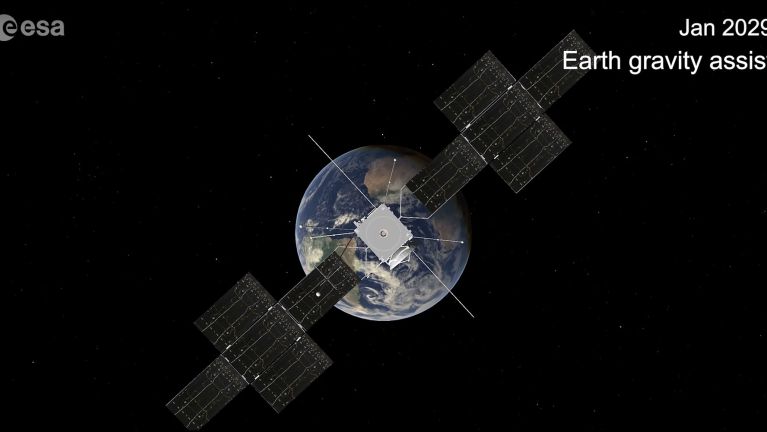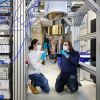Groundbreaking ESA mission to Jupiter
The JUICE space probe is to study the planet Jupiter. The European Space Agency (ESA) is responsible and Germany is playing a leading role.
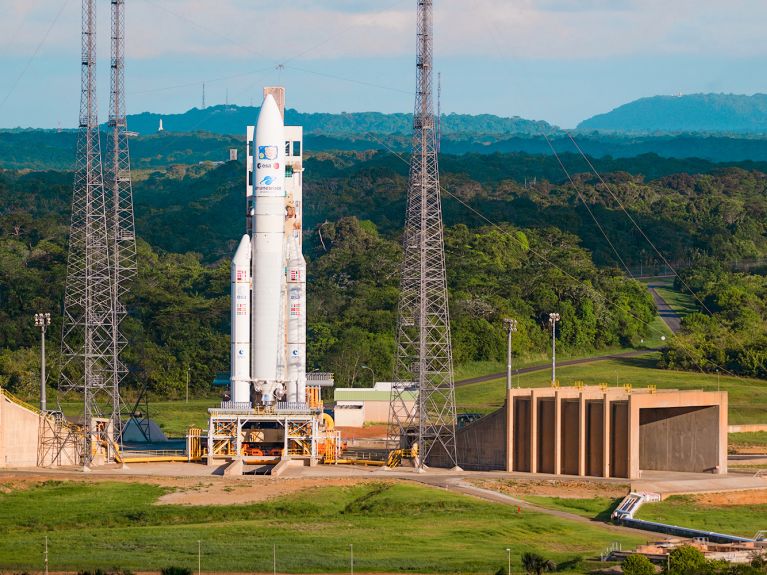
For the European Space Agency (ESA), the launch of the JUICE space probe to the planet Jupiter constitutes a special premiere. This is because JUICE, the Jupiter Icy Moons Explorer, is the first space mission to a remote planet in our solar system that does not have the ESA on board as a passenger. “This is the biggest mission in deep space that we have ever launched,” said Andrea Accomazzo, the mission’s flight operations director, when the probe was being prepared for transport to the launch pad in early February 2023. The ESA has overall responsibility in this European-American-Japanese-Israeli project: for the satellite platform, for the launch with an Ariane 5 rocket from the European Kourou space station and for operation of the probe. Following the launch, which is scheduled to take place in mid-April 2023, JUICE should reach Jupiter in the summer of 2031.
This is the biggest mission in deep space that we have ever launched.
The ESA intends to use JUICE to explore the conditions under which planets can form and life can evolve. To this end, the space probe will analyse Jupiter and its moons at close proximity, using ten scientific instruments. European research institutions played a central role in developing nine of these instruments, the tenth was created mainly in the USA. Japan and Israel contributed hardware for some of the instruments.
German research institutes are involved in seven of the nine European instruments, playing the leading role in two cases. Germany is providing 100 million euros in funding from its National Space Programme to support those domestic institutions involved in developing the instruments. “In addition, there is Germany’s contribution to the financing of the overall costs of the ESA mission, which amounts to 21 percent,” says Christian Chlebek, who is responsible for the JUICE project at the German Space Agency, which belongs to the German Aerospace Center (DLR). The ESA estimates the total costs of the mission at 1.6 billion euros. In all, 18 institutions from 23 countries are participating in JUICE.
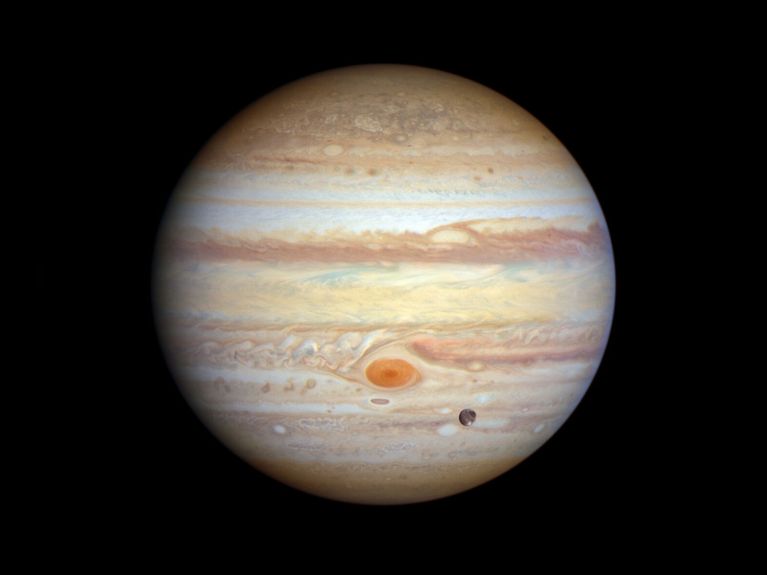
The destination is Jupiter with its 92 moons
The destination for JUICE is the largest planet in our solar system. Jupiter is ten times larger than Earth and 318 times higher in mass. It is not a terrestrial planet like the Earth but a huge gas ball, at the top of whose clouds the temperature is minus 120 degrees Celsius on account of its distance from the sun. Because Jupiter is so huge, it does not have just one moon like the Earth, but at least 92. Four of them have already been known since the 17th century because they are visible as star-shaped dots of light even in modest telescopes.
We know that three of these large moons have icy shells kilometres thick, under which it is so warm that water may exist in liquid form. The moons are Europa, Ganymede and Callisto, named after characters in Greek mythology. If indeed they are home to liquid water, this would be in the form not of small puddles or lakes but huge oceans. In the case of Europa, the ocean beneath the icy shell could contain more water than all the Earth’s oceans combined.
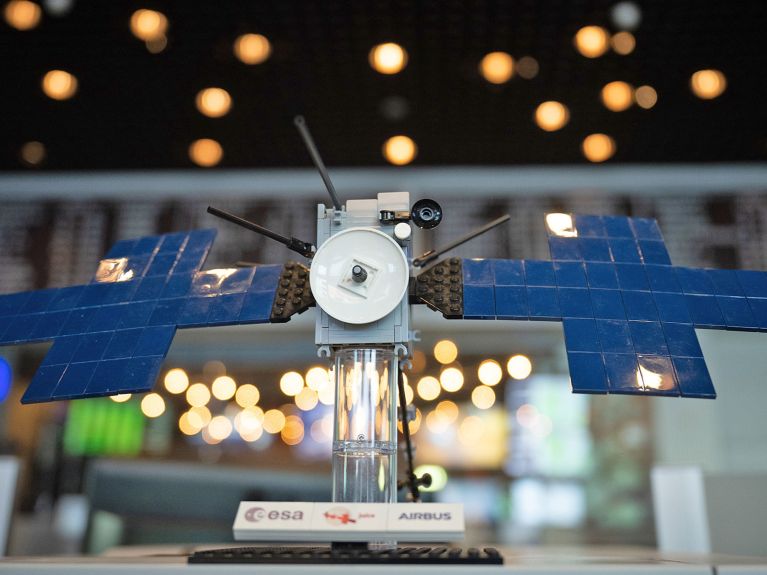
Using the scientific instruments on board JUICE, the ESA hopes to determine how thick the icy shells of the three moons are, whether there really are oceans beneath them, how much water they contain and which mineral substances may be in the water in dissolved form. This wouldn’t yet answer the question as to whether life really exists there. But it would reveal whether the necessary preconditions for life are in place.
JUICE is scheduled to reach its destination in 2031
However, it will be at least a decade before this is known. The space probe will not fly directly to Jupiter because this would require far more fuel than it can carry with it on board. Instead, it will make flybys of several other planets to gain additional momentum: during one and a half days in August 2024 it will make flybys of the moon and the Earth, of Venus in August 2025, and of Earth again in 2026 and 2029. The probe will be travelling for a good seven and a half years before it reaches Jupiter in July 2031.
Dieses YouTube-Video kann in einem neuen Tab abgespielt werden
YouTube öffnenThird party content
We use YouTube to embed content that may collect data about your activity. Please review the details and accept the service to see this content.
Open consent formThen, until the mission draws to a close in 2035, the space probe will spend three and a half years conducting measurements in the Jupiter system. During this time, JUICE will initially orbit the planet before then making a total of 35 flybys of the moons Europa, Ganymede and Callisto at a distance of just a few hundred kilometres so as to explore them at close proximity. Finally, JUICE will enter Ganymede’s orbit, taking measurements while drawing ever closer to the surface of this Jupiter moon - and will end its mission by colliding with Ganymede’s icy shell. “The crash is designed to protect Europa,” explains Christian Chlebeck, who is responsible for the project, adding that there are strong indications that the moon Europa has a fairly thin ice shell or even geysers.
Trials have shown that bacteria from Earth can withstand even the hostile conditions in space for long periods. “What we do know is that Ganymede has an extremely thick ice shell that JUICE will be unable to destroy,” says Chlebek. “This will prevent the probe from making an uncontrolled crash landing on Europa at the end of the mission, which could see the ocean becoming contaminated with bacteria from Earth.” And that would be disastrous: as it would mean that future missions might detect traces of terrestrial life on Europa - rather than life that actually evolved there.
